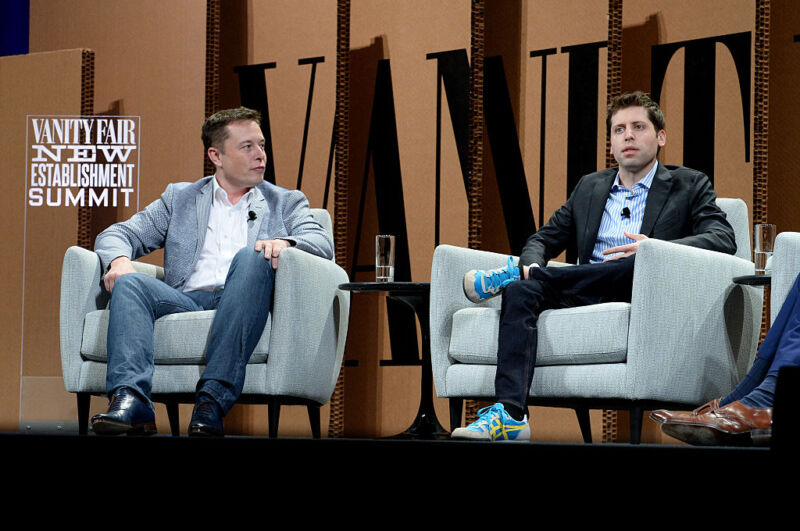Because it sells so very well to a certain percentage of the population, ridiculous people are saying ridiculous things about crime rates in the United States. And, of course, the first place to post this so-called “news” is Fox News.
An independent group of law enforcement officials and analysts claim violent crime rates are much higher than figures reported by the Federal Bureau of Investigation in its 2023 violent crime statistics.
The Coalition for Law Order and Safety released its April 2024 report called “Assessing America’s Crime Crises: Trends, Causes, and Consequences,” and identified four potential causes for the increase in crime in most major cities across the U.S.: de-policing, de-carceration, de-prosecution and politicization of the criminal justice system.
This plays well with the Fox News audience, many of whom are very sure there needs to be a whole lot more law and order, just so long as it doesn’t affect people who literally RAID THE CAPITOL BUILDING IN ORDER TO PREVENT A PEACEFUL TRANSFER OF PRESIDENTIAL POWER FROM HAPPENING.
These people like to hear the nation is in the midst of a criminal apocalypse because it allows them to be even nastier to minorities and even friendlier to cops (I mean, right up until they physically assault them for daring to stand between them and the inner halls of the Capitol buildings).
It’s not an “independent group.” In fact, it’s a stretch to claim there’s anything approaching actual “analysis” in this “report.” This is pro-cop propaganda pretending to be an actual study — one that expects everyone to be impressed by the sheer number of footnotes.
Here’s the thing about the Coalition for Law Order and Safety. Actually, here’s a few things. First off, the name is bad and its creators should feel bad. The fuck does “Law Order” actually mean, with or without the context of the alleged coalition’s entire name?
Second, this “coalition” has no web presence. Perhaps someone with stronger Googling skills may manage to run across a site run by this “coalition,” but multiple searches using multiple parameters have failed to turn up anything that would suggest this coalition exists anywhere outside of the title page of its report [PDF].
Here’s what we do know about this “coalition:” it contains, at most, two coalitioners (sp?). Those would be Mark Morgan, former assistant FBI director and, most recently, the acting commissioner of CBP (Customs and Border Protection) during Trump’s four-year stretch of abject Oval Office failure. (He’s also hooked up with The Federalist and The Heritage Foundation.) The other person is Sean Kennedy, who is apparently an attorney for the “Law Enforcement Legal Defense Fund.” (He also writes for The Federalist.)
At least that entity maintains a web presence. And, as can be assumed by its name, it spends a lot of its time and money ensuring bad cops keep their jobs and fighting against anything that might resemble transparency or accountability. (The press releases even contain exclamation points!)
This is what greets visitors to the Law Enforcement Legal Defense Fund website:
Yep, it’s yet another “George Soros is behind whatever we disagree with” sales pitch. Gotta love a pro-cop site that chooses to lead off with a little of the ol’ anti-antisemitism. This follows shortly after:
Well, duh. But maybe the LELDF should start asking the cops it represents and defends why they’re not doing their jobs. And let’s ask ourselves why we’re paying so much for a public service these so-called public servants have decided they’re just not going to do anymore, even though they’re still willing to collect the paychecks.
We could probably spend hours just discussing these two screenshots and their combination of dog whistles, but maybe we should just get to the report — written by a supposed “coalition,” but reading more like an angry blog post by the only two people actually willing to be named in the PDF.
There are only two aspects of this report that I agree with. First, the “coalition” (lol) is correct in the fact that the FBI’s reported crime rates are, at best, incomplete. The FBI recently changed the way it handles crime reporting, which has introduced plenty of clerical issues that numerous law enforcement agencies are still adjusting to.
Participation has been extremely low due to the learning curve, as well as a general reluctance to share pretty much anything with the public. On top of that, the coding of crimes has changed, which means the FBI is still receiving a blend of old reporting and adding that to new reporting that follows the new nomenclature. As a result, there’s a blend of old and new that potentially muddies crime stats and may result in an inaccurate picture of crime rates across the nation.
The other thing I agree with is the “coalition’s” assertion that criminal activity is under-reported. What I don’t agree with is the cause of this issue, which the copagandists chalk up to “progressive prosecutors” being unwilling to prosecute some crimes and/or bail reform programs making crime consequence-free. I think the real issue is that the public knows how cops will respond to most reported crimes and realizes it’s a waste of their time to report crimes to entities that have gotten progressively worse at solving crime, even as their budget demands and tech uptake continue to increase.
Law enforcement is a job and an extension of government bureaucracy. Things that aren’t easy or flashy just aren’t going to get done. It’s not just a cop problem. It persists anywhere people are employed and (perhaps especially) where people are employed to provide public services to taxpayers.
Those agreements aside, the rest of the report is pure bullshit. It cherry-picks stats, selectively quotes other studies that agree with its assertions, and delivers a bunch of conclusory statements that simply aren’t supported by the report’s contents.
And it engages in the sort tactics no serious report or study would attempt to do. It places its conclusions at the beginning of the report, surrounded by black boxes to highlight the author’s claims, and tagged (hilariously) as “facts.”
Here’s what the authors claim to be facts:
FACT #1: America faces a public safety crisis beset by high crime and an increasingly dysfunctional justice system.
First off, the “public safety crisis” does not exist. Neither does “high crime.” Even if we agree with the authors’ assertions, the crime rates in this country are only slightly above the historical lows we’ve enjoyed for most of the 21st century. It is nowhere near what it used to be, even if (and I’m ceding this ground for the sake of my argument) we’re seeing spikes in certain locations around the country. (I’ll also grant them the “dysfunctional justice system” argument, even though my definition of dysfunction isn’t aligned with theirs. The system is broken and has been for a long time.)
FACT #2: Crime has risen dramatically over the past few years and may be worse than some official statistics claim.
“Dramatically” possibly as in year-over-year in specific areas. “Dramatically” over the course of the past decades? It’s actually still in decline, even given the occasional uptick.
FACT #3: Although preliminary 2023 data shows a decline in many offenses, violent and serious crime remains at highly elevated levels compared to 2019.
Wow, that sounds furious! I wonder what it signifies…? First, the authors admit crime is down, but then they insist crime is actually up, especially when compared to one specific waypoint on the continuum of crime statistics. Man, I’ve been known to cherry-pick stats to back up my assertions, but at least I’ve never (1) limited my cherry-picking to a single year, or (2) pretended my assertions were some sort of study or report backed by a “coalition” of “professionals” and “analysts.” Also: this assertion is pretty much, “This thing that just happened to me once yesterday is a disturbing trend!”
There’s more:
FACT #4: Less than 42% of violent crime and 33% of property crime victims reported the crime to law enforcement.
Even if true (and it probably isn’t), this says more about cops than it says about criminals. When people decide they’re not going to report these crimes, it’s not because they think the criminal justice system as a whole will fail them. It’s because they think the first responders (cops) will fail them. The most likely reason for less crime reporting is the fact that cops are objectively terrible at solving crimes, even the most violent ones.
FACT #5: The American people feel less safe than they did prior to 2020.
First, it depends on who you ask. And second, even if the public does feel this way, it’s largely because of “studies” like this one and “reporting” performed by Fox News and others who love to stoke the “crime is everywhere” fires because it makes it easier to sell anti-immigrant and anti-minority hatred. It has little, if anything, to do with actual crime rates. We’re twice as safe (at least!) as a nation than we were in the 1990s and yet most people are still convinced things are worse than they’ve ever been — a belief they carry from year to year like reverse amortization.
Then we get to the supposed “causes” of all the supposed “facts.” And that’s where it gets somehow stupider. The “coalition” claims this is the direct result of cops doing less cop work due to decreased morale, “political hostility” [cops aren’t a political party, yo], and “policy changes.” All I can say is: suck it up. Sorry the job isn’t the glorious joyride it used to be. Do your job or GTFO. Stop collecting paychecks while harming public safety just because the people you’ve alienated for years are pushing back. Even if this assertion is true (it isn’t), the problem is cops, not society or “politics.”
The authors also claim “decarceration” and “de-prosecution” are part of the problem. Bail reform efforts and prosecutorial discretion has led to fewer people being charged or held without bail. These are good things that are better for society in the long run. Destroying people’s lives simply because they’re suspected of committing a crime creates a destructive cycle that tends to encourage more criminal activity because non-criminal means of income are now that much farther out of reach.
You can tell this argument is bullshit because of who it cites in support of this so-called “finding.” It points to a study released by Paul Cassell and Richard Fowles entitled “Does Bail Reform Increase Crime?” According to the authors it does and that conclusion is supposedly supported by the data pulled from Cook County, Illinois, where bail reform efforts were implemented in 2019.
But the stats don’t back up the paper’s claims. The authors take issue with the county’s “community safety rate” calculations:
The Bail Reform Study reported figures for the number of defendants who “remained crime-free” in both the fifteen months before G.O. 18.8A and the fifteen months after—i.e., the number of defendants who were not charged in Cook County for another crime after their initial bail hearing date. Based on these data, the Study concluded that “considerable stability” existed in “community safety rates” comparing the pre- and post-implementation periods. Indeed, the Study highlighted “community safety rates” that were about the same (or even better) following G.O. 18.8A’s implementation. The Study reported, for example, that the “community safety rate” for male defendants who were released improved from 81.2% before to 82.5% after; and for female defendants, the community safety rate improved from 85.7% to 86.5%.66 Combining the male and female figures produces the result that the overall community safety rate improved from 81.8% before implementation of the changes to 83.0% after.
The authors say this rate is wrong. They argue that releasing more accused criminals resulted in more crime.
[T]he number of defendants released pretrial increased from 20,435 in the “before” period to 24,504 in the “after” period—about a 20% increase. So even though the “community safety rate” remained roughly stable (and even improved very slightly), the total number of crimes committed by pretrial releasees increased after G.O. 18.8A. In the fifteen months before G.O.18.8A, 20,435 defendants were released and 16,720 remained “crime-free”—and, thus, arithmetically (although this number is not directly disclosed in the Study), 3,715 defendants were charged with committing new crimes while they were released. In the fifteen months after G.O. 18.8A, 24,504 defendants were released, and 20,340 remained “crimefree”—and, thus, arithmetically, 4,164 defendants were charged with committing new crimes while they were released. Directly comparing the before and after numbers shows a clear increase from 3,715 defendants who were charged with committing new crimes before to 4,164 after—a 12% increase.
Even if, as the authors point out, more total crimes were committed after more total people were released (bailed out or with no bail set), the County’s assessment isn’t wrong. More people were released and the recidivism rate fell. Prior to G.O. 18.8A’s passage, the “crime-free” rate (as a percentage) was 79.6%. After the implementation of bail reform, it was 83.0%. If we follow the authors to the conclusion they seem to feel is logical, the only way to prevent recidivism is to keep every arrestee locked up until their trial, no matter how minor the crime triggering the arrest.
But that’s not how the criminal justice system is supposed to work. The authors apparently believe thousands of people who are still — in the eyes of the law — innocent (until proven guilty) should stay behind bars because the more people cut loose on bail (or freed without bail being set) increases the total number of criminal acts perpetrated.
Of course, we should expect nothing less. Especially not from Paul Cassell. Cassell presents himself as a “victim’s rights” hero. And while he has a lot to say about giving crime victims more rights than Americans who haven’t had the misfortune of being on the resulting end of a criminal act, he doesn’t have much to say about the frequent abuse of these laws by police officers who’ve committed violence against arrestees.
Not only that, but he’s the author of perhaps the worst paper ever written on the intersection of civil rights and American law enforcement. The title should give you a pretty good idea what you’re in for, but go ahead and give it a read if you feel like voluntarily angrying up your blood:
Still Handcuffing the Cops? A Review of Fifty Years of Empirical Evidence of Miranda’s Harmful Effects on Law Enforcement
Yep, that’s Cassell arguing that the Supreme Court forcing the government to respect Fifth Amendment rights is somehow a net loss for society and the beginning of a five-decade losing streak for law enforcement crime clearance rates.
So, you can see why an apparently imaginary “coalition” that supports “law order” would look to Cassell to provide back-up for piss poor assertions and even worse logic.
There’s plenty more that’s terrible in this so-called study from this so-called coalition. And I encourage you to give it a read because I’m sure there are things I missed that absolutely should be named and shamed in the comments.
But let’s take a look at one of my favorite things in this terrible waste of bits and bytes:
Concomitant with de-prosecution is a shift toward politicization of prosecutorial priorities at the cost of focusing on tackling rising crime and violent repeat offenders. Both local, state, and federal prosecutors have increasingly devoted a greater share of their finite, and often strained, resources to ideologically preferred or politically expedient cases. This approach has two primary and deleterious impacts – on public safety and on public faith in the impartiality of the justice system.
Under the tranche of recently elected progressive district attorneys, prosecutions of police officers have climbed dramatically and well before the death of George Floyd in May 2020, though they have since substantially accelerated.
Yep, that’s how cops see this: getting prosecuted is a “political” thing, as though being a cop was the same thing as being part of a political party. Cops like to imagine themselves as a group worthy of more rights. Unfortunately, lots of legislators agree with them. But trying to hold cops accountable is not an act of partisanship… or at least it shouldn’t be. It should just be the sort of thing all levels of law enforcement oversight strive for. But one would expect nothing more than this sort of disingenuousness from a couple of dudes who want to blame everyone but cops for the shit state the nation’s in (even if it actually isn’t.)







 In traditional neural networks, sometimes called multi-layer perceptrons [left], each synapse learns a number called a weight, and each neuron applies a simple function to the sum of its inputs. In the new Kolmogorov-Arnold architecture [right], each synapse learns a function, and the neurons sum the outputs of those functions.The NSF Institute for Artificial Intelligence and Fundamental Interactions
In traditional neural networks, sometimes called multi-layer perceptrons [left], each synapse learns a number called a weight, and each neuron applies a simple function to the sum of its inputs. In the new Kolmogorov-Arnold architecture [right], each synapse learns a function, and the neurons sum the outputs of those functions.The NSF Institute for Artificial Intelligence and Fundamental Interactions





 The paper’s findings are generally favorable for level 4 AVs, but they perform worse in turns, and at dawn and dusk.Nature
The paper’s findings are generally favorable for level 4 AVs, but they perform worse in turns, and at dawn and dusk.Nature



























